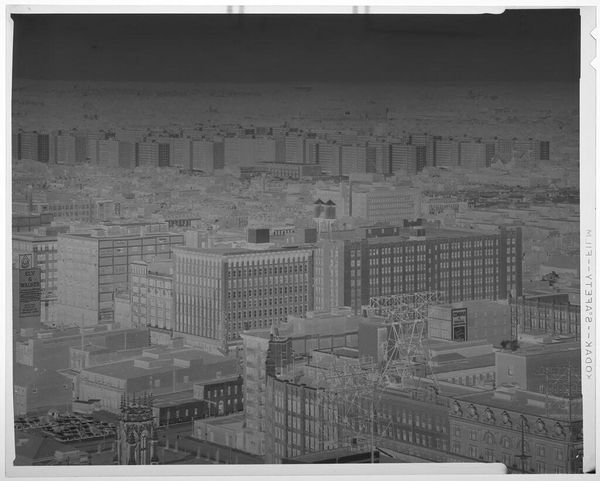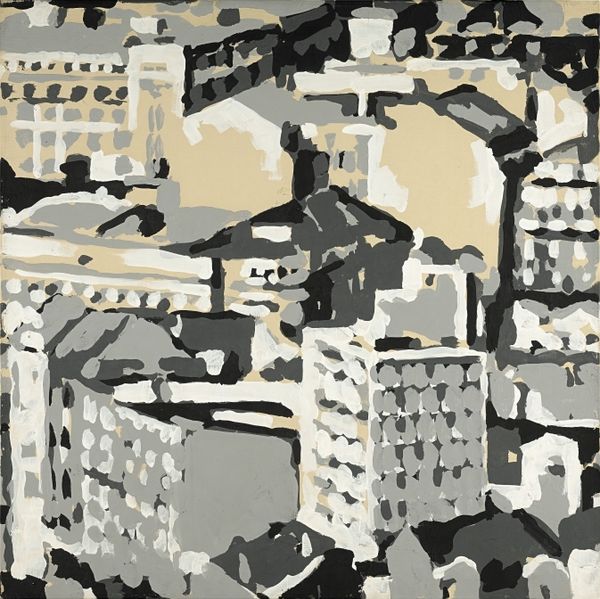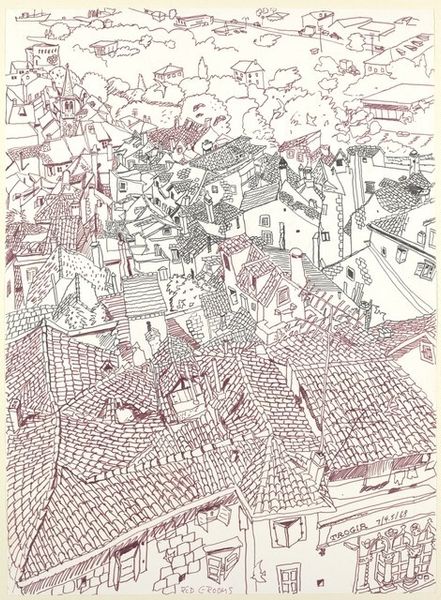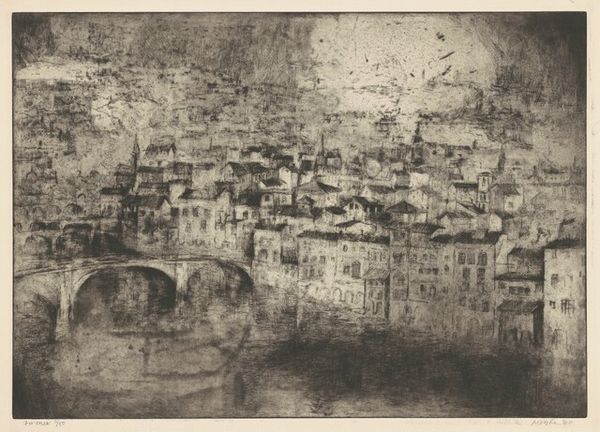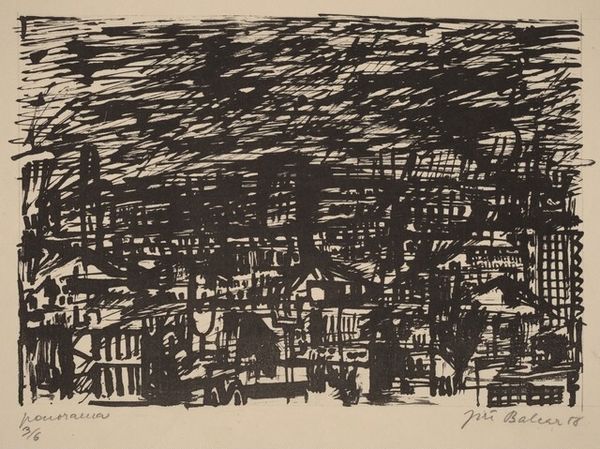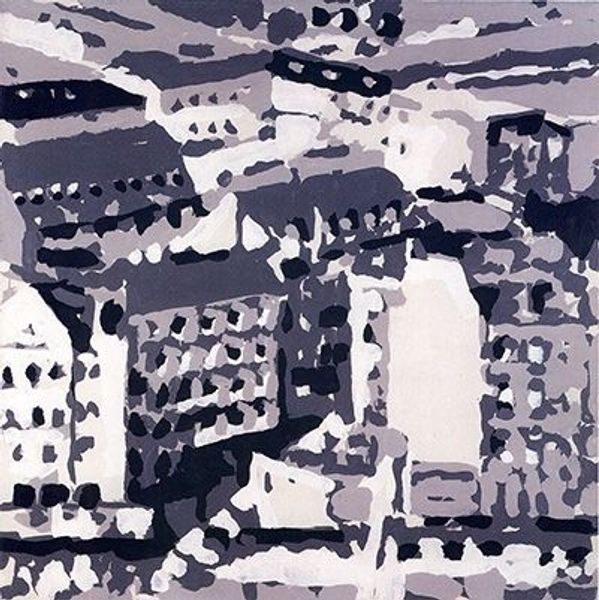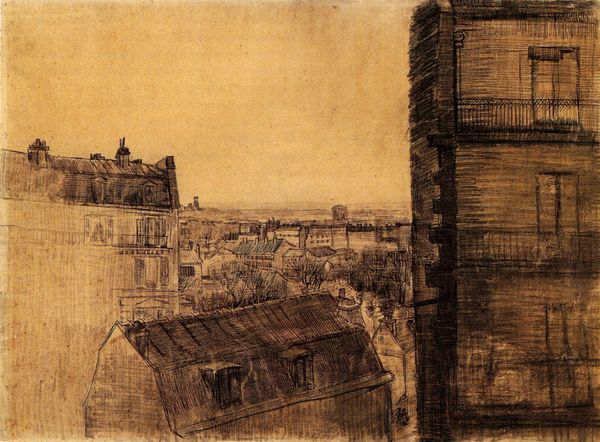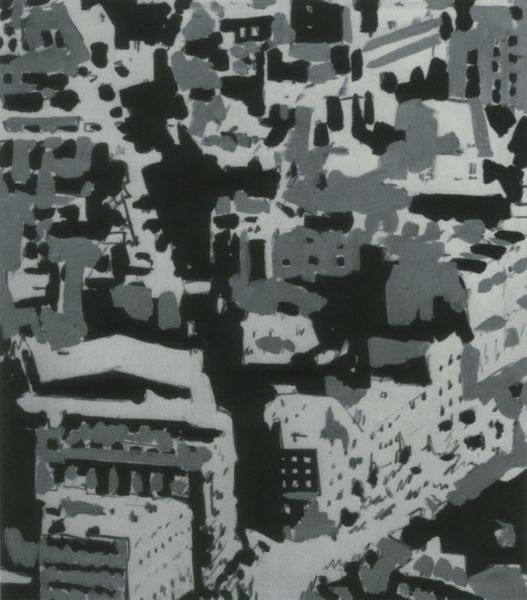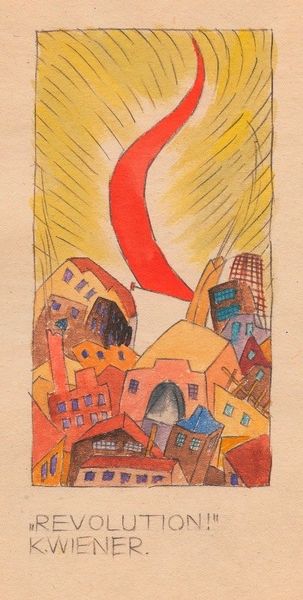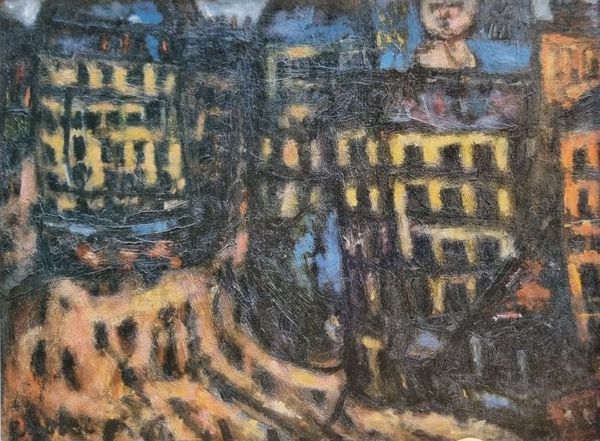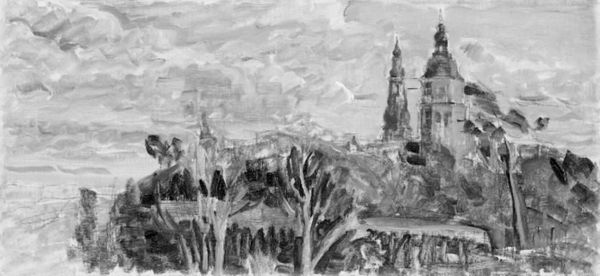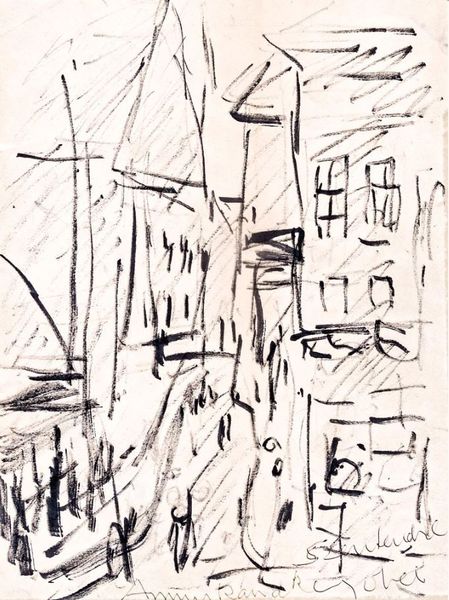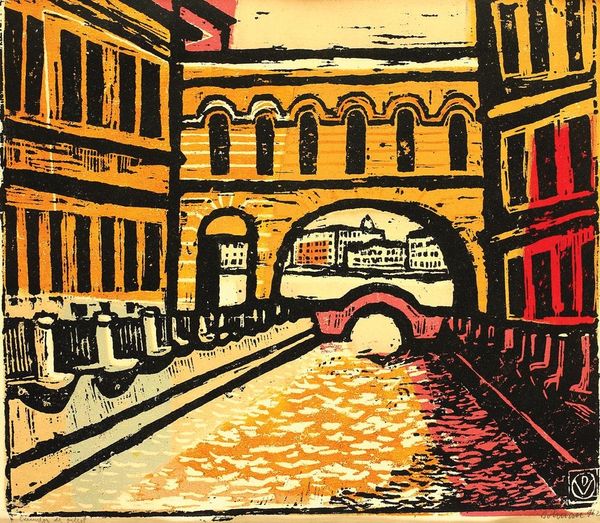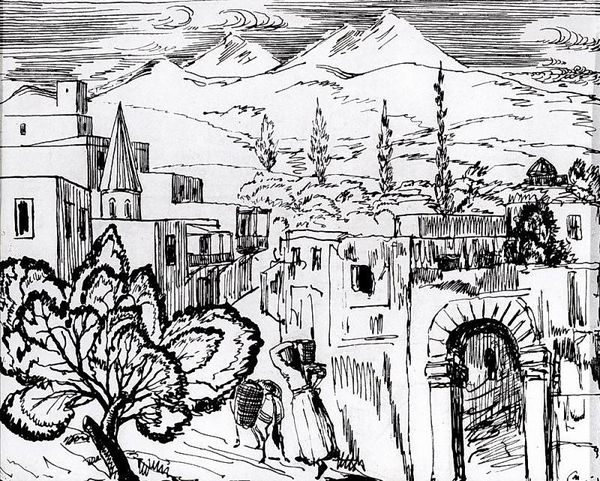
graphic-art, print
#
graphic-art
#
ink painting
# print
#
landscape
#
cityscape
Copyright: National Gallery of Art: CC0 1.0
Curator: Frank Wright's 1963 print, "Paris Landscape", invites us to consider not only the visual elements but also the deeper meanings embedded in the work. Editor: Oh, Paris! From here it looks... ominous. A skyline brooding under a bruised sky, like the city is holding its breath. It makes me wonder what was happening in '63 to make the artist feel this way. Curator: A fascinating observation. I would posit that the effectiveness of Wright's print comes from the contrasts inherent in the image—dark tones set against fleeting instances of brighter colors in the lower band, indicative of dawn. We must observe how such effects shape the viewer's response. Editor: I can definitely see that, the sort of flickering, golden lights among all those densely packed buildings – feels like secret warmth struggling to break through. Do you think it has anything to do with postwar anxiety, maybe? A city weighed down, but still shimmering with resilience? Curator: It is valid to consider that possible context, yes, and a semiotic reading could definitely illuminate cultural meanings that help shape interpretations about historical moments and collective emotion. In terms of graphic qualities, Wright clearly focused on ink density to achieve stark delineation between zones of tonal weight. Editor: Right, I also keep being drawn to how tightly packed those buildings are – row after row of them, squashed together like sardines. It's an almost suffocating composition, yet it also suggests this kind of shared experience, like a collective consciousness of millions under one roof. Does it suggest confinement? Curator: The tight composition of that dense layering suggests more than mere geographic placement, but is in fact a strategic encoding of space – with respect to architectural forms in tension. Editor: I’m so drawn to how an urban vista can elicit an odd sense of both detachment and profound connection at the same time. All these little human stories, buzzing beneath the skyline! Curator: A fitting thought upon reflection: we began by noting shadow, and from that perspective we can discern much about both absence and potential. Editor: Indeed – an experience leaving me somehow thrilled to step out, into the clamor, or nestle even more snugly here!
Comments
No comments
Be the first to comment and join the conversation on the ultimate creative platform.
